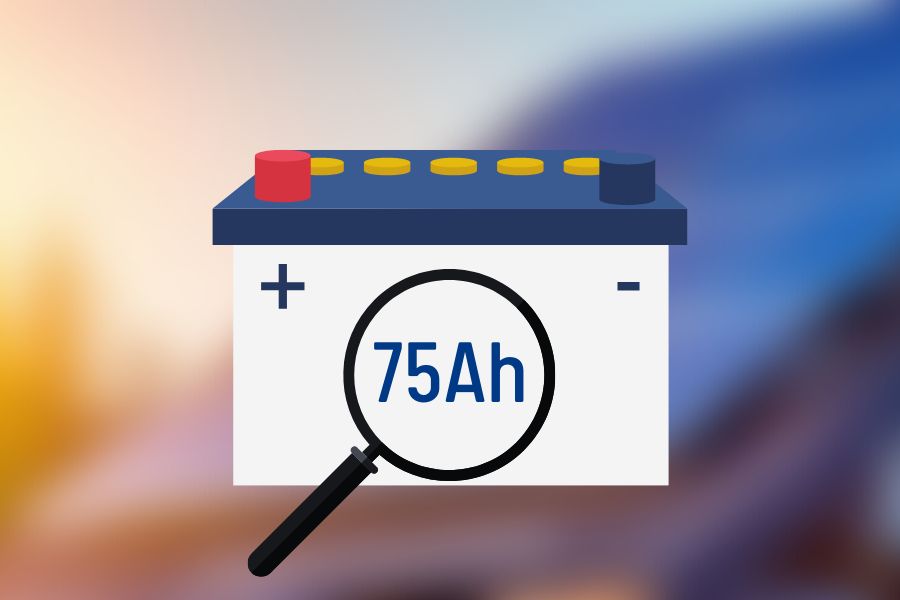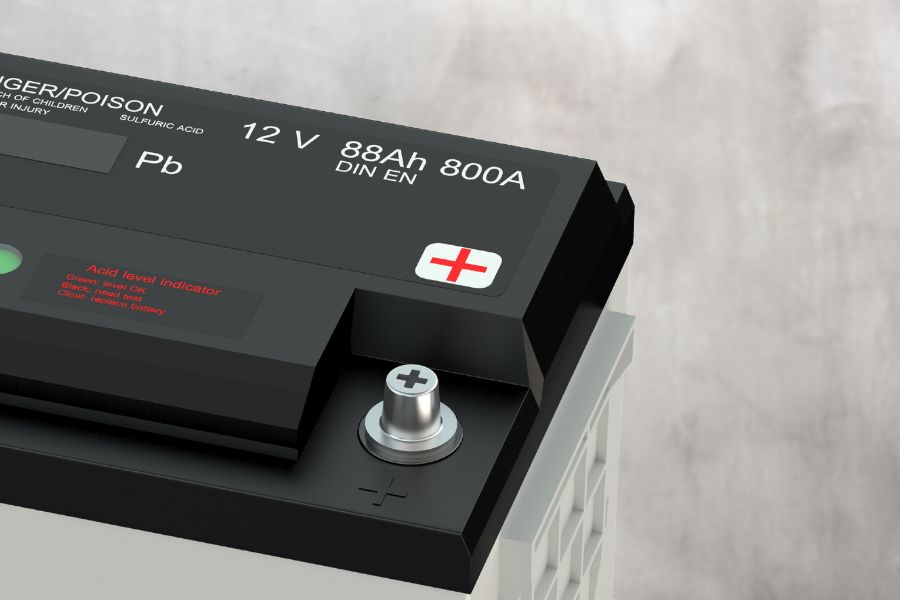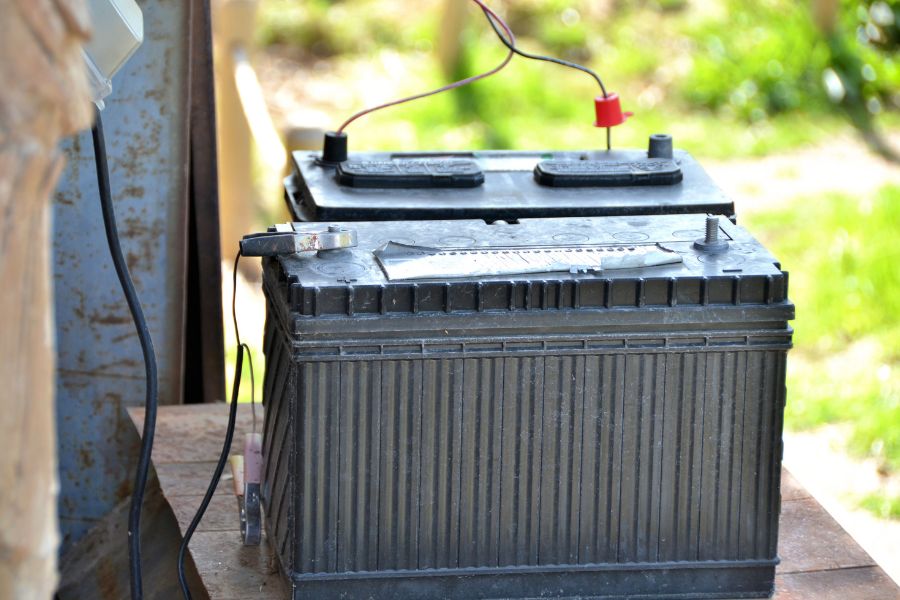What Are Amp Hours on a Battery

Batteries have become an indispensable part of our modern lives, powering smartphones, laptops, electric vehicles, and countless other devices. While shopping for batteries, you may have encountered the term “amp hours.” But what are amp hours on a battery?
This article will delve into amp hours on a battery and its significance in determining battery capacity. This amp-hours to watt hours calculator also help to compare the capacities of batteries with different voltages.
Understanding Amp Hours

To grasp the concept of amp hours, we must first start with the basic unit of electric current: the ampere (amp). An ampere measures the rate electric current flows through a circuit, representing the quantity of charge passing through a point in one second.
It’s similar to measuring water flow through a pipe—the ampere quantifies the current flowing through an electrical conductor.
Now, let’s move on to hours. Hours represent time; in the context of batteries, amp hours (Ah) is a unit that quantifies a battery’s capacity to supply a current over a specific period. It indicates the number of amperes a battery can deliver in one hour of continuous use.
For example, if a battery has an amp hour rating of 10Ah, it can supply a current of 10 amperes for one hour before being fully discharged. Alternatively, it could deliver 1 ampere for 10 hours or 0.5 amperes for 20 hours. This measurement helps us understand how long a battery can power a device before recharging.
In addition to amp hours, another useful unit of measurement is watt hours (Wh), which considers the battery’s voltage. To calculate watt hours, you multiply the amp hour rating by the battery’s voltage.
For instance, a 10Ah battery with a voltage of 12 volts would have an energy capacity of 120 watt hours (10Ah * 12V = 120Wh). Watt hours provide a more comprehensive understanding of the battery’s ability to deliver power.
Deep cycle batteries, commonly used in applications requiring sustained power over an extended period, often have higher amp hour ratings. These batteries are designed to provide a steady flow of energy and can be discharged more deeply without significantly impacting their lifespan.
Illustrating Amp Hours
To understand the concept of ampere hours, let’s consider a battery with a rating of 10 amp hours. This means the battery can deliver a current of 10 amperes for one hour before it is fully discharged. Alternatively, it could deliver 1 ampere for 10 hours or 0.5 amperes for 20 hours.
The ampere hour rating provides valuable information about how long a battery can power a device based on its energy capacity.
For instance, if a device requires 2 amperes of current, we can calculate how many amp hours are needed. In this case, the battery’s amp hour rating of 10 means it can power the device for 5 hours (10 Ah / 2 A = 5 hours). This calculation allows us to estimate the runtime of a device based on the battery’s capacity.
A publication by the National Renewable Energy Laboratory (NREL) stated that deep cycle batteries, designed for sustained power applications, often have higher amp hour ratings. These batteries are designed to provide a steady flow of energy and meet the demands of devices requiring longer runtime.
Factors Affecting Runtime

According to the U.S. Department of Energy, understanding the power requirements of a device is crucial in determining the appropriate battery capacity and optimizing runtime.
It’s important to note that various factors influence the actual runtime of a device powered by a battery. These factors include:
Power Requirements of the Device
The runtime of a device powered by a battery is greatly influenced by its power requirements. Devices with higher power demands, such as power tools, deplete battery amp hours faster than lower-power devices like clocks or remote controls.
It is essential to understand the power needs of your device, including the required DC amps or ampere hours, to select the appropriate battery capacity. This ensures optimal runtime and prevents the battery from draining too quickly.
Considerations such as the power requirements of a vehicle’s starting battery also fall under this category. By matching your device’s power requirements with the correct battery amp hours, you can maximize the efficiency and longevity of your battery.
Battery Efficiency
Efficiency plays a vital role in determining runtime. No battery operates at 100% efficiency, resulting in some energy loss as heat during charging and discharging.
Batteries with higher efficiency can provide continuous power to devices for longer periods. This means that even with fewer amp hours, a battery with higher efficiency can deliver more usable energy compared to a less efficient one.
When comparing battery technologies or models, considering efficiency becomes crucial to optimizing runtime. Choosing a higher-efficiency battery ensures that your devices receive maximum power output and extended runtime, even with a lower amp hour rating.
Battery Condition
The condition of the battery plays a crucial role in its runtime. Over time, batteries can experience capacity degradation, resulting in a reduced ability to hold charge compared to their initial state.
Proper maintenance and care are essential to maximize battery longevity and preserve the ampere hour rating. Regular charging cycles and avoiding extreme temperature conditions can help maintain the optimal condition of the battery, ensuring longer runtime.
It’s important to note that the runtime can vary depending on its condition, even with the same battery. You can ensure consistent and optimal performance by caring for your battery and preserving its ampere hour capacity.
Battery Capacity (Amp Hour Rating)
The ampere hour rating of a battery directly impacts device runtime. Measured in amp hours (Ah), it represents the battery’s energy storage capacity. Batteries with higher ampere hour ratings can deliver power for a longer duration.
For instance, a battery rating of 10 ampere hours can supply 1 ampere for 10 hours or 10 amperes for 1 hour. Deep cycle batteries, designed for sustained power applications, often have higher ampere hour ratings, making them suitable for devices that require extended runtime.
When selecting a battery, consider how many amp hours are needed to ensure sufficient power supply for your device and optimize runtime.
Choosing the Right Battery

When purchasing batteries, it’s essential to consider your specific needs and your device’s power requirements. While a battery with a higher amp hour rating may seem obvious, it may not always be the best option.
If the battery surpasses the power needs of your device, it could be unnecessary and potentially incompatible due to its physical size.
To ensure you select the appropriate battery, it’s advisable to consult the device’s manual or the manufacturer’s guidelines. These resources will provide valuable information about the recommended battery specifications, including the optimal amp hour rating.
By following these guidelines, you can ensure compatibility and optimize the performance and runtime of your device.
Choosing the correct battery involves balancing the amp hour rating and your device’s power requirement.
By considering these factors and referring to the manufacturer’s recommendations, you can make an informed decision and select a battery that meets the specific needs of your device, ensuring reliable performance and extended runtime.
Considerations Beyond Amp Hours
It is worth noting that battery technologies have advanced over the years, and not all batteries possess the same energy density.
For instance, lead-acid batteries generally have lower energy density than lithium-ion batteries. This means lead-acid batteries require a larger physical size to achieve the same amp-hour rating as lithium-ion batteries.
Different battery chemistries offer unique advantages and disadvantages, so it’s essential to consider factors beyond amp hours when choosing a battery.
Voltage and Energy Capacity
In addition to amp hours, another critical specification to consider is the battery’s voltage. Voltage represents the electric potential difference between two points in a circuit and determines the force or pressure with which electric current flows.
Different devices have varying voltage requirements, so it is essential to match the battery’s voltage with the device’s voltage requirement for proper functioning.
Conclusion
In conclusion, amp hours on a battery indicate its capacity to supply a current over a specific period. It quantifies the charge a battery can deliver in one hour of continuous use. Understanding amp hours helps us determine how long a battery can power a device before it requires recharging.
However, it is essential to consider the power requirements, battery chemistry, efficiency, voltage, and overall energy capacity of a battery when choosing the right one for your devices.
Considering these factors, you can make an informed decision and ensure optimal battery performance.



